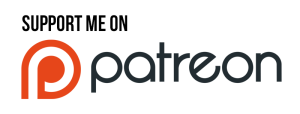How to Win Friends and Influence People
I steadfastly refused to read this book for over a decade. This was almost entirely due to the title. I found it cliched, cheesy, and just generally offputting. Despite that, I continued to hear people I admire and trust recommend it. Eventually I gave in and purchased it for my Kindle, still wary that I wasn’t going to enjoy the read. After reading it? Simply put: Don’t let the title dissuade you!
The reason behind the cheesy and outdated title is simple: It was published in 1936. Think about how products were advertised at that point in time and the title makes perfect sense. I really wish I had read this book prior to starting my career as a Community Manager and online communications professional. There are a lot of great foundational lessons on communications that would have saved me some serious grief along the way.
Note: For the purpose of this review, I’m discussing Dale Carnegie’s original 1936 version. There’s a version with updated examples, but having heard some really mixed opinions I chose to avoid that and stick to the original. Your mileage may vary!
The Good
This book has earned its reputation as a foundational text on building great communication skills. There’s a reason it’s considered a classic, and why it’s still referenced today some 80 years after its initial publication. The lessons within it are simple, well-articulated, and genuinely entertaining to read. It’s a great combination of practical advice and real world examples to illustrate each lesson.
At its core, How to Win Friends and Influence People is about understanding basic social psychology, as well as how ones initial response may not be the most effective. For example, instead of lashing out in anger, leading with forgiveness and a show of trust might get you better results. It can be counterintuitive, and it takes effort to put into everyday practice, but the results are remarkably positive. As any community manager will tell you, respond in anger, get it back tenfold. Respond with a genuine, compassionate desire to help? Things might just go a little easier for you…
Not every example or every lesson is going to resonate (I am never going to be a salesman, for one…), but there are plenty that will. Above all else, just remember that every lesson in the book is intended to be applied from a genuine and honest stance. If you’re unable to be genuine in your approach to communication and relationships, no amount of reading is going to resolve that for you. Think one of the lessons doesn’t suit your communication style? Understand why, adapt it, or scrap it! You don’t have to agree with everything in it to get some value of reading it.
The Dated
The Examples
While the examples in the book are wonderfully written and a fun read, they are quite dated. Mobsters and biplane mechanics make for entertaining examples, but they’re not exactly in line with today’s world. The core lessons are timeless, but you may need to spend a bit more time thinking through how you’d apply them to modern situations.
Say My Name
One of the lessons in the book revolves around saying someone’s name repeatedly in conversation. While I understand the reasoning, this would drive me up a wall. Conversation style has become more relaxed since Carnegie first wrote the book, and I think this is one of the casualties. Feel free to try it out, but try it on me and I’m likely to give you the grump face after the 3rd instance.
“Isn’t that book for sociopaths?”
This was one of the more baffling things I’ve been asked in relation to Carnegie’s work. And yet when I’ve looked at other reviews this same sentiment pops up time and time again. The argument is that by giving people the tools to understand and adapt their communications, Carnegie is encouraging them to be manipulative and disingenuous. While I understand how some have arrived at that conclusion, I wholeheartedly disagree.
The lessons in the book are just another tool. Like any tool, they can be used for good, or for ill. One of the things Carnegie emphasizes throughout the book is the value of being genuine and sincere. Don’t pretend to be interested in someone else, be interested in them. Remember to take the time to listen, and to value the person in front of you. If you can’t find a way to do that in a way that’s genuine, don’t!
Can someone use the lessons in How to Win Friends and Influence People to manipulate others? Yes. (In fact, Charles Manson did just that) Does that devalue the content for the rest of us with no ill intentions? Absolutely not! If you learn something that helps you genuinely communicate better with others, I’d say it’s totally worth the read. Even if you’re a seasoned communications professional, you’ll find something of value. Even if it’s just confirmation of your lived experiences.
TLDR;
If you’re not intending to read the book and only take one thing away from this review, let it be:
Everyone is the hero of their own story.
That person who ruined your day by speaking over you in an important meeting? Almost certainly not doing it because they hate you. Maybe they’re dead certain that their idea is the one that will save the day, or provide the most value to the company. Their idea might be utter crap, and it doesn’t excuse the rudeness in their delivery, but it does help provide context for how you choose to respond.
And understanding how you respond and the likely outcome before you do so? The biggest lesson of the book!
Lead with empathy, be genuine, and understand that everyone is the hero of their own story. How you proceed from there is up to you!
Resources
- How to Win Friends and Influence People (Good Reads)
- Amazon Store Link (Full disclosure: Referral Link)
- Wikipedia Entry
Like this review? Support me on Patreon!
I rely on the support of wonderful folks like yourself!
Dig my writing and want to see more? Support me on Patreon!
Questions? Comments? A book you’d like to see me review? Drop me a line in the comments or @boopsocial!







